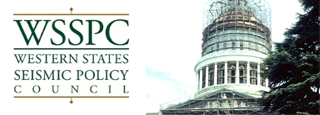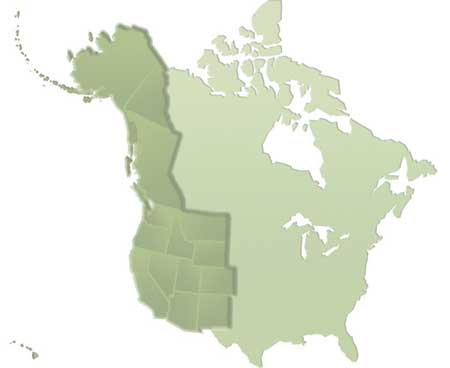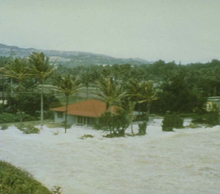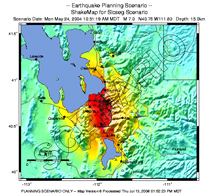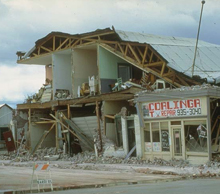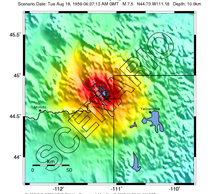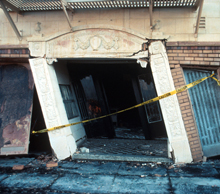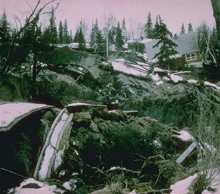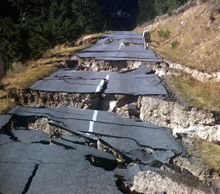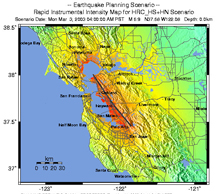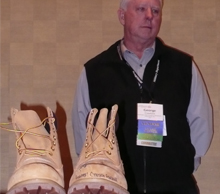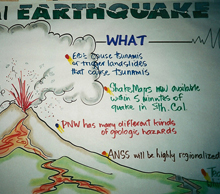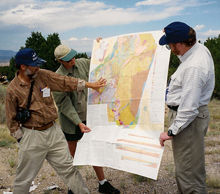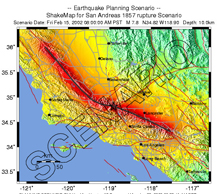Arizona Earthquake Hazard Mitigation Legislation
(AZ‐1) Arizona Revised Statutes (ARS), Title 26: Establishes the Arizona Division of Emergency Management under the Department of Emergency and Military Affairs. Title 26 states the Division shall prepare for and coordinate those emergency management activities that may be required to reduce the impact of disaster on persons or property. ADEM is organized into four operational sections: Logistics, Preparedness, Operations, and Recovery. ADEM is also responsible for the administrative oversight of the Arizona Emergency Response Commission. The Mitigation Office falls under the Operations Section. The Mitigation Office is staffed by five employees which includes the State Hazard Mitigation Officer, Grant Program Manager, State and Local Hazard Mitigation Planning Program Manager, Programs and Projects Specialist (outreach and education), and an Administrative Assistant. The Operations Section coordinates emergency response and conducts hazard mitigation planning through the coordination and application of federal and state resources. It liaises with federal, state and local agencies to conduct a daily all‐hazard threat assessment to ensure the emergency management community is not caught unaware.
The Recovery Section manages the Public Assistance Program (406 Mitigation): The Recovery Section is extremely proactive in regards to 406 Mitigation on federal as well as state disasters. Each Disaster Recovery Coordinator has received training on hazard mitigation and works with the subgrantees to include any and all potential 406 Mitigation measures in the project worksheets. The Arizona Administrative Code (R8‐2‐314) states, “The applicant shall comply with any mitigation requirements specified by the Director for repair or replacement projects subject to repeated damage from flooding or other threats to life or property”, which advocates for mitigation on Public Assistance projects. The Mitigation Office and the Recovery Section coordinate very closely before, during and following disasters. The Recovery Section includes 406 and 404 mitigation information in all of their Applicant Briefings and training sessions. If there is a mitigation project which does not meet the requirements of 406 Mitigation, the Recovery Section will notify the Mitigation Office so it may be looked at for Mitigation grant funding.
The Preparedness Section is responsible for the State of Arizona Emergency Response and Recovery Plan (SERPP) which addresses the consequences of any emergency, disaster or incident in which there is a need for state resources in providing prevention, preparedness, response and/or recovery assistance activities. It is applicable to natural hazards and human‐caused incidents. The Recovery and Mitigation Annex within the SERPP was consolidated and has been completely revised in mid‐2007 as part of ESF #14.
The Arizona State Emergency Response Commission (AZSERC) oversees 15 Local Emergency Planning Committees and supports community, industry and government and academia in: planning, release and incident reporting, data management guidance for inventory reporting, public disclosure about hazardous chemicals and development of training and outreach programs. Also provides consultative services, workshops and coordinates development and review of plans and programs for local planning committees.
(AZ‐2) Growing Smarter and Growing Smarter Plus Acts: Through a partnership among the Arizona Legislature, interested citizens, and the Arizona Governor’s Office, a comprehensive effort was undertaken to address growth‐related issues that resulted in the passage of the Growing Smarter Act of 1998 and the Growing Smarter Plus Act of 2000. Taken together, the Growing Smarter legislation provides comprehensive land use planning and zoning reforms, including the acquisition of open space, and gives residents of Arizona cities, towns, and counties a number of tools to shape growth in their own communities, such as the right to vote on general plans and restrictions on how general and comprehensive plans can be amended.
(AZ‐3) Executive Order 2002‐5 (Amending Executive Order 2001‐2) Growing Smarter Oversight Council: Established Growing Smarter Oversight Council to continue to address growth‐related issues and evaluate the effectiveness of the Growing Smarter and Growing Smarter Plus Acts. The Oversight Council consists of 25 appointed members representing a variety of private and public interests who are charged with the following tasks: monitoring the implementation of Growing Smarter and Growing Smarter Plus Acts; identifying obstacles to implementation and suggesting refinements to facilitate implementation; developing a method for measuring the effectiveness of the Acts; determining how compliance with the Acts should be addressed and suggesting improvements to the Acts; reporting annually to the Legislature, Governor’s Office, and the citizens of Arizona.
(AZ‐4) Arizona Administrative Code Title 7 Education Chapter 6 Section 760. Laws and Building Codes: To the extent required by law, school buildings shall be in compliance with federal, state and local building and fire codes and laws that are applicable to the particular building. At a minimum, the 1997 Uniform Building Code (UBC) is required to be met for new school facility construction and, as required, for building renovations in existing schools.
Information taken from the Washington State Seismic Mitigation Policy Gap Analysis: A Cross-State Comparison, by Scott B. Miles, Ph. D. and Brian D. Gouran, L.G.
